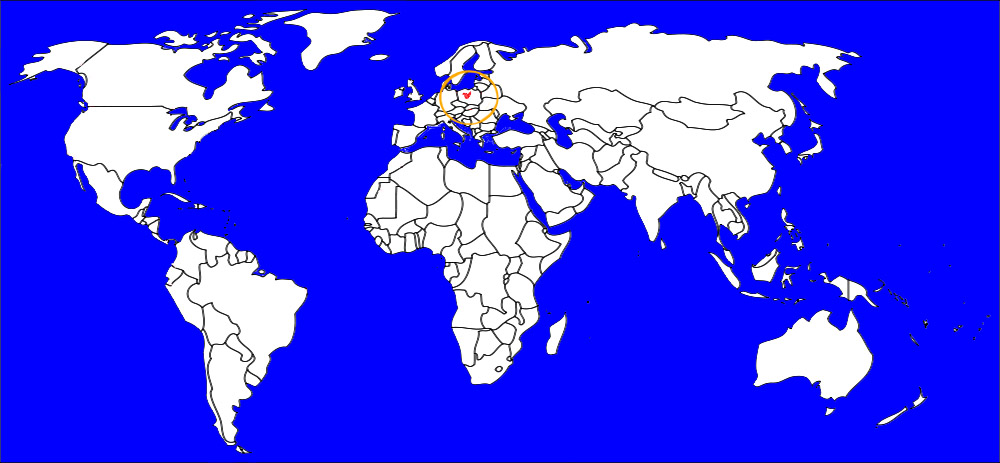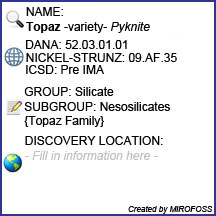![]()
Pyknite is a variety of the mineral topaz. For information about augite please click the article tab at the top of the page, or click -here-.
![]()
Pyknite is a fine grained variety of topaz. The crystals are usually yellow to white and occur in dense
aggregates of prismatic to acanthine crystals. The word 'pyknite' comes from the Greek word 'pyknos' which means dense. This name is suitable for the dense nature of the mineral variety. Currently only one location is available where pyknite can be found.
![]()
Pyknite can be referenced in certain current and historical texts under the following two names:
The mineral pyknite can be translated into the following select languages:
| Arabic | Bulgarian | Chinese (Sim) | |||
| Croatian | Czech | Danish | |||
| Dutch | Esperanto | Estonian | |||
| Finnish | French | German | Weißer Stangenschörl |
||
| Greek | Hebrew | Stangenstein | |||
| Italian | Japanese | Korean | |||
| Latin | Lithuanian | Norwegian | |||
| Persian | Polish | Portuguese | |||
| Romanian | Russian | Slovak | |||
| Spanish | Piknita | Swedish | Tagalog | ||
| Turkish | Ukrainian | Vietnamese |
![]()
Pyknite has only been found in one place in the world. The map below shows major documented concentration of pyknite:

![]()
 |
The MIROFOSS database offers free printable geological identification tags for personal and non-profit use. These tags can be used to properly identify mineral samples in your collection. -Click here- to download a full size jpeg image for a topaz identification tag; which can be printed on paper or used with a plastic laser printer. |
 |
What's this? What can I do with it? |
![]()
| Geographical Data | Mindat.org. Retrieved on 2012-04-27 |
| January 10, 2012 | The last time this page was updated |
| ©2017 MIROFOSS™ Foundation | |
 |





